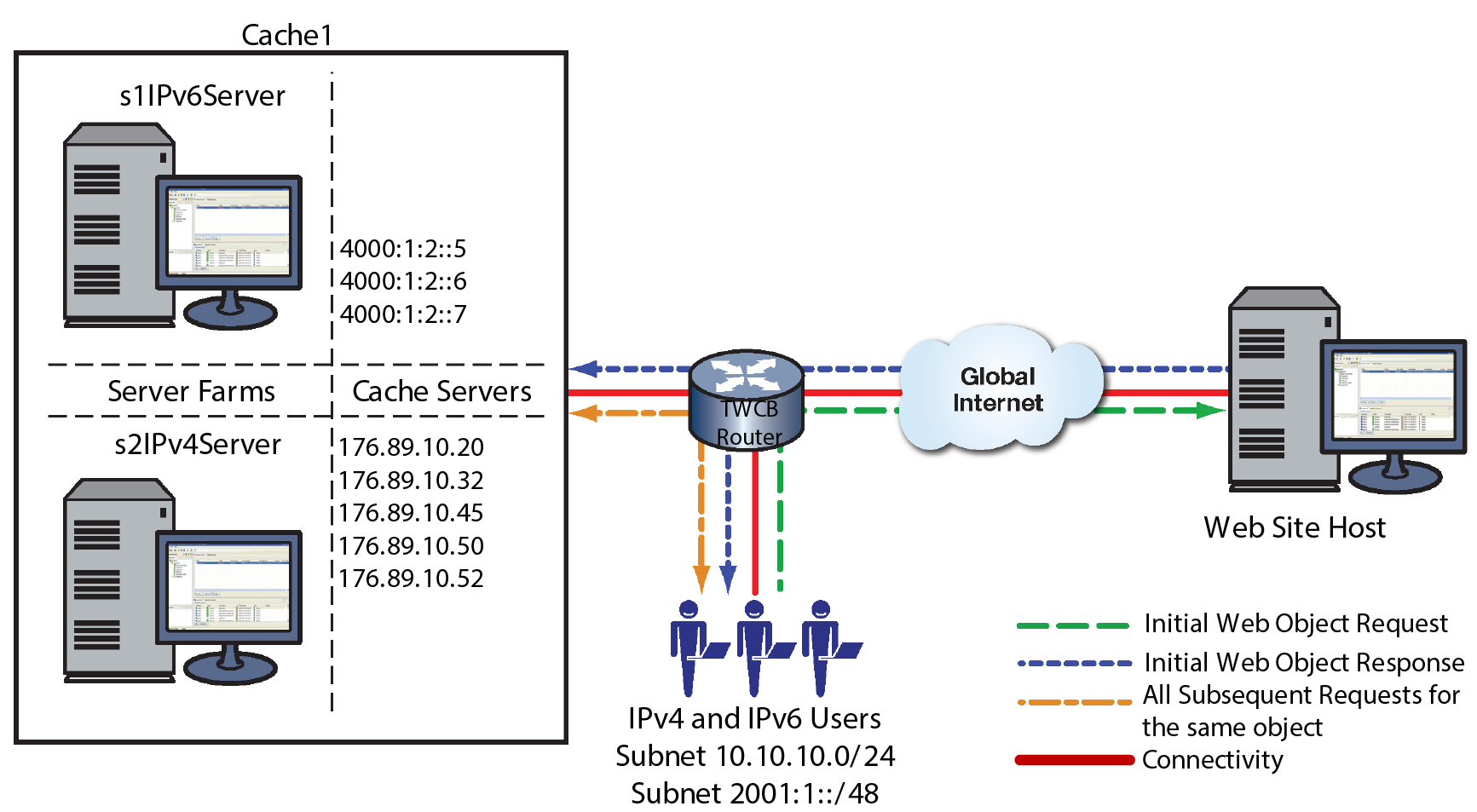A TWCB configuration is made up of one or more cache servers that are logically grouped in a server farm and one or more server farms that are associated with a web cache.
TWCB Configuration Overview provides an overview of a TWCB configuration. In our overview, Cache1 is the name of the web cache. It is made up of two server farms: s1IPv6Server and s2IPv4Server. The s1IPv6Server server farm is configured with three IPv6 cache servers from the 4000:1:2:: subnet. The s2IPv4Server server farm is configured with five IPv4 cache servers from the 176.89.0.0 subnet. IPv6 end-user web objects are cached on the s1IPv6Server. IPv4 end-user web objects are cached on the s2IPv4Server.
The S-Series router does not act as a cache for web objects; rather, it redirects HTTP requests to local servers on which web objects are cached. The cache servers should have a web-based transparent proxy cache running. The Squid application is an example of a web-based transparent proxy cache.
In our example an IPv6 user on the 2001:1::/48 subnet or an IPv4 user on the 10.10.10.0/24 subnet initiates a web request, which it sends to the router. The router determines that the destination address is accessible through a VLAN that has a TWCB web cache applied to it. TWCB determines that the request is eligible for redirection, selects a cache server from the appropriate server farm, and sends the request to that cache server. The cache server will either service the request from it‘s cache or go out to the Internet (using its own source IP address) and retrieve the needed information. The cache server will respond to the client using the web site‘s IP address as the source IP address. From the client's perspective it is communicating with the actual web site, when in fact it is really conversing with a local transparent cache.
Once a web object resides in the cache, any future requests for that web object will be handled by the cache server until the cache entry expires. Cache entry expiration is configured in the web-based transparent proxy cache application installed on the cache server.

S-Series devices support both standard and source and destination NAT TWCB. Standard TWCB assumes that both the webcache and user clients are either directly attached to the TWCB router or that the cache server response to the user client will transit the TWCB router. Most of the discussion in this section assumes a standard TWCB configuration context. TWCB source and destination NAT allows user clients, the TWCB router, and the webcache to be located anywhere in the network. See TWCB Source and Destination NAT for a TWCB source and destination NAT discussion.
There are five components in a TWCB configuration:

 Print
this page
Print
this page Email this topic
Email this topic Feedback
Feedback